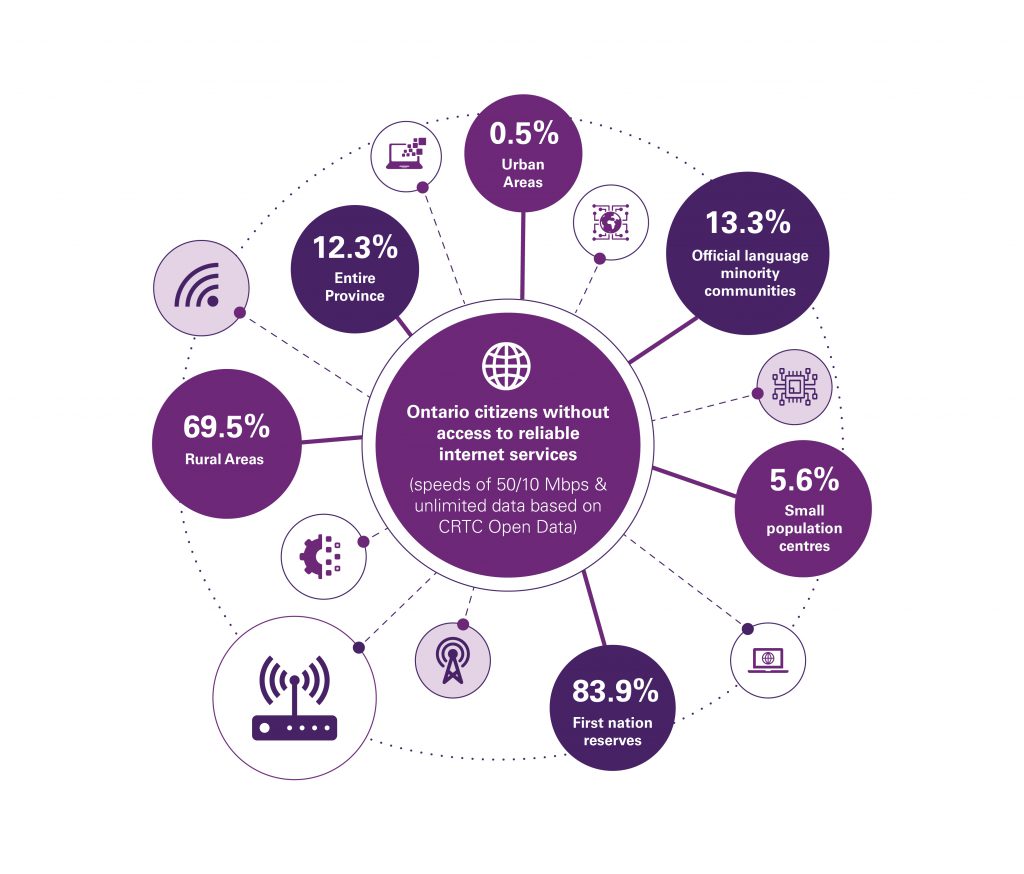Our economy will be reshaped by global trends in digitization, the Internet of Things and next generation manufacturing. Across Ontario, tech-focused urban centres like Waterloo and Ottawa thrive while many rural areas struggle to adapt to plant closures, population loss and working from home. Wired and wireless broadband are essential twenty-first century economic infrastructure, and crucial to economic competitiveness. In many ways, broadband is to the twenty-first century what telephone lines were to the twentieth century.
Over the past year, the gaps that have persisted for far too long became crystal clear. Far too many people in a vast number of areas do not have connectivity. High-speed internet access in rural and remote communities is touch-and-go and it’s impossible to work from home, attend virtual class, operate a small business or start a new one without a reliable internet connection. REALTORS® are consistently being asked about the quality of broadband access for new property listings and 18% of buyers have highlighted it as a primary consideration when choosing a location to buy a home, according to our 2021 OREA Home Buyer & Seller Profile survey.

Significant under-investment is the result of limited incentives for telecommunications service providers to make upfront, long-term investments. This is understandable. Low population densities, long distances between households and challenging physical terrain are costly in any competitive market. By some estimates, 700,000 households across Ontario are unserved or underserved. This means that economic opportunities for local entrepreneurs, vulnerable populations, small businesses and, most importantly, Ontario’s youth are lost. In addition to the unfairness, the full potential of our human capital is held back. Lack of broadband inhibits grassroots economic activity and business attraction activities that lead to well-paying jobs and promising careers. Providing reliable broadband is paramount.
To help address this decade-old issue, the Province has supported not-for-profit organizations like the South Western Integrated Fibre Technology (SWIFT) and Eastern Ontario Regional Network (EORN) initiatives. These organizations help improve the economic case for rural broadband by facilitating the interaction between private enterprise and government resources. For instance, in some projects, providers compete to deliver services to consumers within an area, maximizing competition and value-for-money, as any infrastructure funded has been “open access” — meaning any telecom service provider can use it. This creates a flexible, competitive approach that benefits consumers and aids in the delivery of projects that connect remote, rural and northern communities. More innovative initiatives like these must be undertaken to get all Ontario households access to broadband.
In recent budgets, Queen’s Park committed to a $4-billion investment in broadband over six years, starting in the 2019 fiscal year, to ensure that every region has access to reliable broadband services by 2025. This is an exciting and necessary infrastructure project, and about time. It will create jobs and develop opportunities for technologies to be leveraged in a variety of sectors.
The Province’s unwavering commitment to this investment is critical. It will require equally important commitments by the Government of Canada and private sector. The Province should seek further commitments from the Universal Broadband Fund and the Canada Infrastructure Bank.
Enhancing the connectivity of rural and remote communities in the post-pandemic economic landscape will help level the economic playing field, increase productivity and make it easier to attract and retain businesses, investment and people.








